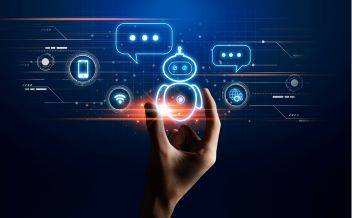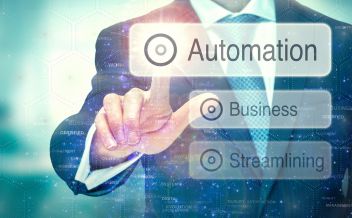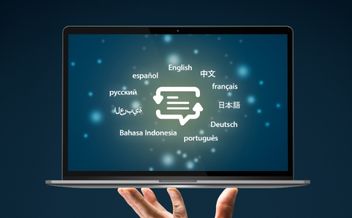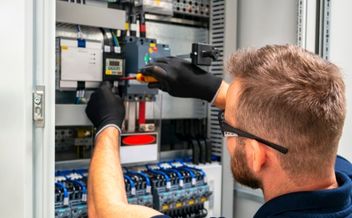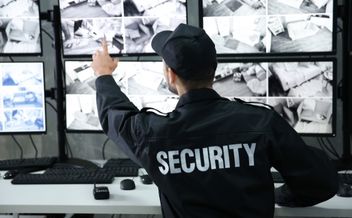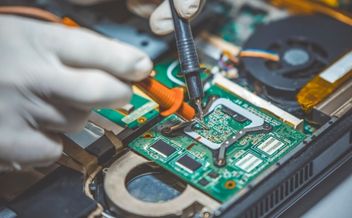Cost-Saving Strategies for Private Schools: Leveraging Artificial Intelligence
If you're a private school administrator, you're constantly looking for ways to maximize efficiency and stretch your budget. One innovative approach you might not have considered is leveraging artificial intelligence (AI). This technology is not just for tech-giants anymore — it's making its way into classrooms and administrative offices, showing impressive potential for revolutionizing education. So, let's explore how private schools can save money with AI.
1. Explore the Role of Artificial Intelligence in Education
Artificial intelligence is no longer a futuristic concept; it's here, and it's transforming the way we teach and learn. But what exactly is AI, and how does it work in an educational setting?
AI refers to computer systems designed to mimic human intelligence—learning, problem-solving, and decision-making. In an educational context, AI can automate administrative tasks, customize learning experiences, and even predict student performance.
Let's have a look at some of the exciting ways AI is being used in schools:
Automating routine tasks: Imagine never having to worry about scheduling classes or even grading homework again. AI can take over these mundane tasks, freeing up time for teachers to focus on what they do best—teaching.
Personalized learning: AI can analyze a student's strengths, weaknesses, and learning style to create a personalized education plan. This individual attention can lead to improved student outcomes, without the need for additional staff resources.
Predictive analytics: AI can use data to predict future trends. For instance, it can identify students at risk of dropping out, allowing schools to intervene early and potentially save on the costs associated with student attrition.
Virtual teaching assistants: Remember when Siri first came out? Now, imagine a Siri for education. AI-powered teaching assistants can answer students' questions around the clock, providing support outside of school hours without the expense of hiring additional staff.
From automating routine tasks to personalizing education, it's clear that AI has a lot to offer private schools. But you might be wondering, "How can my school afford to implement this cutting-edge technology?" Don't worry—that's coming up next.
2. Identify Cost-Saving Opportunities through AI
We've seen a glimpse into what AI can do in an educational setting. Now, let's understand how AI can help private schools save money. After all, every penny saved is a penny earned, right?
Reducing administrative costs: This is a no-brainer. By automating repetitive and time-consuming tasks like scheduling and grading, AI can significantly cut down on labor costs. The time teachers save can be used to enhance student learning, which is a win-win for everyone.
Preventing student attrition: As mentioned earlier, AI's predictive analytics can identify students at risk of dropping out. By intervening early, schools can retain more students and maintain steady tuition revenue. This is one way how private schools can save money with AI.
Personalized learning without extra staffing: Implementing personalized learning traditionally means hiring more staff. However, AI allows for individualized instruction without the added payroll expense. This not only saves money but also enhances student learning experience.
Cutting down on infrastructure costs: With AI, a lot of learning can happen virtually. This can potentially reduce the need for physical infrastructure, helping schools save on upkeep, maintenance, and even expansion costs.
From administrative costs to student attrition, and from personalized learning to infrastructure, AI is presenting cost-saving opportunities at every turn. The key is to identify where your school could benefit the most. Then, it's all about implementing the right AI solutions for your unique needs. But how do you do that? Let's move on to the next section to find out.
3. Implement AI for Administrative Efficiency
We've established that AI can deliver significant cost savings for private schools. One of the key areas where this can be realized is in administrative tasks. But how do you go about implementing AI? Let's break it down.
Before you leap into the world of AI, take a step back and assess your needs. What administrative tasks are consuming the most time and resources? For some, it might be grading or scheduling, while for others it could be data entry or report generation. Once you've identified the tasks, you can then look for AI tools designed to automate these processes. For example, AI platforms like GRADEUP can automate grading, while virtual assistants like SARA can handle scheduling tasks.
Training the Staff
Implementing AI for administrative efficiency is not just about purchasing a software tool and plugging it in. Your staff needs to understand how to use it effectively. Providing proper training ensures that everyone can make the most of the AI tool, and it can truly deliver the time and cost savings you expect.
Monitoring and Adjusting
Once you've implemented the AI tool, it's important to monitor its performance. Is it delivering the efficiencies you expected? If not, you may need to adjust the way you're using it, or perhaps consider a different tool. Remember, the goal is to save money and time, so it's crucial to ensure the tool is doing its job.
Implementing AI for administrative efficiency might seem daunting, but it doesn't have to be. With careful planning, the right training, and ongoing monitoring, AI can become a valuable asset for your school, helping you save money and streamline processes. And who doesn't want that?
4. Leverage AI for Personalized Learning
Now that we've discussed how AI can streamline administrative tasks, let’s explore another exciting way private schools can save money with AI: personalized learning. Personalized learning is all about tailoring education to meet the unique needs of each student, and AI makes it more feasible and cost-effective.
There are several AI-driven learning platforms available, such as Knewton or Dreambox, which adapt to a student's learning style and pace. These platforms can identify areas where a student is struggling and modify the curriculum accordingly. By using such tools, teachers can focus their attention where it's needed most, making their time more effective and efficient.
Implementing Adaptive Learning Programs
Adaptive learning programs go hand in hand with AI-driven learning platforms. These programs adjust the learning material in real time based on a student's performance. This means students get the help they need when they need it without waiting for a teacher's intervention. Not only does this enhance the student's learning experience, but it also helps teachers manage their workload more effectively.
Utilizing AI for Real-Time Feedback
One of the key benefits of AI in education is the ability to provide real-time feedback. This can help students identify their mistakes immediately, allowing them to learn and correct their errors on the spot. This immediate feedback loop can significantly enhance learning outcomes without requiring additional resources.
By leveraging AI for personalized learning, private schools can provide an enhanced educational experience while also saving money. It's a win-win situation for the school and the students. After all, isn't that what we all want — a better education at a lower cost?
5. Measure the Impact of AI on School Budget
As we've seen, there are numerous ways AI can contribute to cost savings in private schools. However, it's crucial to remember the importance of measuring the impact of AI on your school budget. This way, you can ensure you're getting the most bang for your buck.
Conduct Regular Financial Audits
One of the best ways to measure the impact is through regular financial audits. This involves comparing expenditure before and after implementing AI. Pay attention to areas like administrative costs, teaching resources, and student performance. Have they improved? Have costs gone down? These changes can signal the effectiveness of the AI tools and programs you've decided to implement.
Use AI to Analyze Financial Data
Interestingly, AI itself can be a tool to measure its impact on your budget. Yes, it's as meta as it sounds! AI-powered financial analysis tools can help you dive deep into your budget, uncovering patterns and trends you might miss otherwise. This can give you a clearer picture of how AI is helping your school save money.
Evaluate the Return on Investment (ROI)
Lastly but most importantly, evaluate the Return on Investment (ROI) of your AI initiatives. This involves comparing the money saved or gained through AI with the cost of implementing and maintaining the AI technology. A positive ROI indicates that your AI initiatives are paying off and contributing to cost savings.
By regularly measuring the impact of AI on your school budget, you can ensure that the investment in AI is well worth it. After all, knowing how private schools can save money with AI is only half the battle — the other half is making sure those savings are realized!








